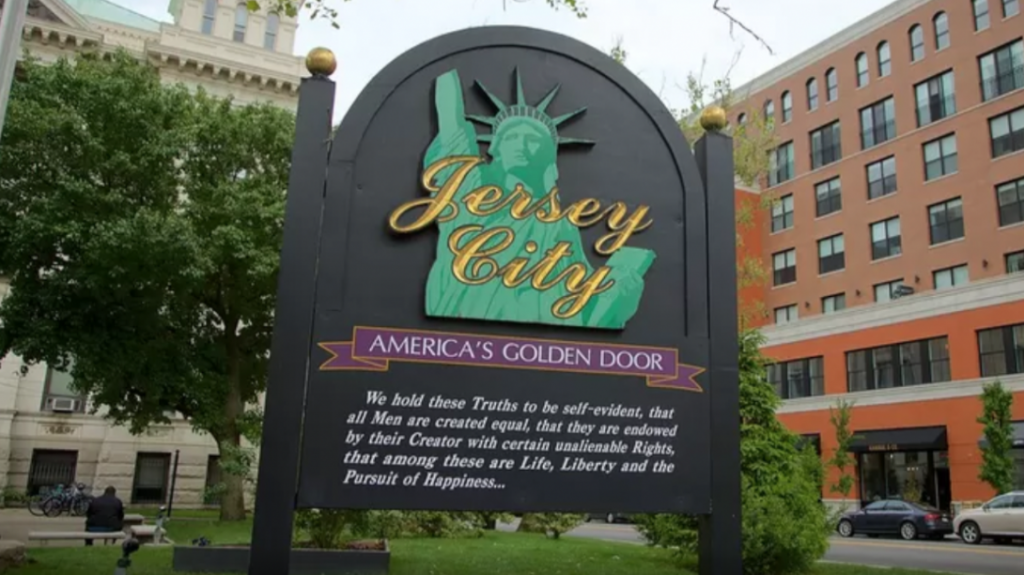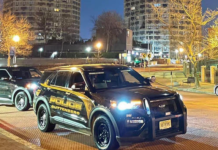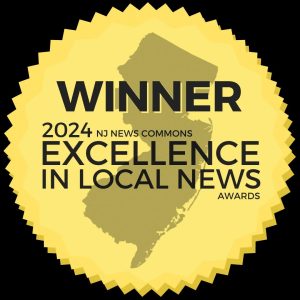In an editorial, Drs. Yasmin Meah, Peter Gliatto, and Jersey City Ward E Councilman James Solomon talk about how they feel the city should respond to COVID-19’s second wave.

Having seen the ravages of COVID-19, from overwhelmed hospital wards to extensive food bank lines, we are deeply troubled by the exponential rise in cases in Jersey City.
The city is now averaging over 60 cases per day, a rate that Harvard’s Global Health Institute categorizes as its highest risk level for COVID’s continued spread.
Without stronger local action, there is a real chance that soon we will be facing what much of Europe and parts of America are experiencing right now — large spikes in cases, a shortage of hospital beds, and a need for strict austerity measures like lockdowns.
Though we’ve been here before, we know more this time.
With the possibility of an effective, widely available vaccine months away, now is the time for each of us to double down on the core public health practices that brought this virus under control once before – wearing masks, washing hands, maintaining social distance, getting tested, and avoiding indoor gatherings.
We know that simply exhorting each other to follow these guidelines will not be enough. Pandemic fatigue and the arrival of colder weather will make these practices more difficult and more challenging for business owners and local residents to adopt and enforce.
For that reason, our leaders and our local government need to do more; we need an aggressive local response–above and beyond policies from Washington DC and Trenton– to keep the infection rate down and save lives.
What does an aggressive local response look like? Modeled after standard setters from around the country, Jersey City can implement these seven practices to become an exemplar in its own right.
- Transparency with data to build trust and buy-in
Our elected officials will make life and death decisions about our city based on COVID-19 data. For the public to trust those decisions, the administration must provide the public significantly more data than is currently available.
Just a few weeks ago, Mayor Fulop argued against further restrictions on bars and restaurants based on what he called “robust contract tracing,” without disclosing that Jersey City contact tracers do not reach large numbers of cases (though we can’t say definitively how many because the administration has not released the data), and without providing rigorous data about where our tracers are identifying cases.
The following information should be made public on Jersey City’s portal, as much of it is in other cities such as New York City and Newark:
- CONTACT TRACING SUCCESS: Explicit reporting of contract tracing markers of success, as defined by the CDC, such as the number of cases in which contacts were successfully reported by index cases and contacted within a 24 hour time frame and the percentage of contacts of index cases who completed isolation.
- REGIONAL AND CITY-WIDE POSITIVE TEST RATES:
- Positivity rate for Jersey City administered tests to Jersey City residents.
- Positivity rate and cases by ZIP code (so we can have confidence that Jersey City has the ability to identify hot spots and target interventions)
- COVID-19-INDUCED STRAIN ON HOSPITAL CAPACITY:
- Daily averages of emergency room patients with COVID-19 in Jersey City
- Daily averages of hospitalized patients with COVID-19 in Jersey City
- Percentage of COVID-19 hospitalized patients in intensive care
- VIOLATIONS OF CITY AND STATE-MANDATES: All summons, by category and count, issued to residents and businesses for violations of any of Governor Murphy’s executive orders or stricter Jersey City orders pertaining to COVID-19.
- Evaluate compliance with public health guidelines
Jersey City’s MaskUP campaign is a great step in making sure people have what they need to stay safe.
It most certainly sends a message to residents that wearing a mask is critical to mitigating spread of the virus; however, we lack critical data on whether people actually wear masks in high-risk contexts such as indoor dining, shopping, social and religious events.
Data on mask usage (and proper usage) is essential. Philadelphia made evaluating compliance with mask-wearing a core part of its MaskUp initiative, and is making that data public.
People can view the compliance rate per week, and compare them alongside infection rates, map where infections are occurring in the city, deaths and hospitalizations.
People need feedback on the effectiveness of mask wearing on a local level– they need to see results to change behavior.
- Surge community health resources to “hotspots” identified by rigorous data analysis
Modeling New York State and New York City’s “hotspot” approach, Jersey City should regularly assess which neighborhoods are experiencing a rise in cases.
Health officials should then partner with community leaders in those neighborhoods to use positive — not punitive — messaging to address the importance of mask wearing and adherence to other public health guidelines.
City outreach teams can regularly visit businesses, religious and community institutions with masks and other materials to convey that Jersey City leadership is there for them, and to make sure they have what they need for their staff, patrons, and neighbors to be safe.
Regular visits to businesses will also provide helpful information about where mask compliance appears to be low and where more support is needed.
- Tough limits on high-risk activities
The science is clear. Indoor activities with large crowds, no masks, and prolonged contact are petri dishes for COVID-19. Jersey City should have zero tolerance for these activities, like large house parties or packed bars.
Enforcement teams should be regularly deployed during high-risk hours to shut-down these activities.
- Promote the low-risk social activities that keep us sane
As winter approaches, the city must tend to the mental and social health of its residents by fostering low-risk activities that get residents out of the house and provide much needed socialization.
Any activity outdoors, with 100% mask compliance, and no crowding, such as a farmer’s or holiday market, is appropriate for the city to permit and encourage.
- Develop an equity metric to measure the virus’ impact on all vulnerable communities
Sadly COVID does not affect us all equally. The brunt of this brutal virus has been borne by communities of color.
Jersey City, modeled after San Francisco, must measure COVID’s impact in all our communities and make this data publicly available.
That data will ensure that we pay serious attention to the needs of the most affected communities through the provision of critical resources, support and outreach.
- Ensure City leadership, especially JCPD officers, VISIBLY role-model safe behaviors.
One of the most effective tools for promoting mask-wearing and good public health practices is for leaders to role-model those behaviors. Jersey City’s most visible role-models are our elected officials and our police officers.
Unfortunately, they are frequently observed in the community without masks or wearing masks improperly—which implies to the public that mask-wearing is optional.
This is a mistake, and puts our community and our own officers at risk. All city employees and elected officials must commit to abiding by the city’s public health mandates, and must be the visible role-models that encourage persistence and adherence.
Jersey City can’t wait for a vaccine to save the lives of so many who will lose the fight or succumb to the debilitating consequences of a preventable infectious disease.
Prevention is key here – there IS a path to mitigate the spread. We’ve tamed this virus once before.
To do so again, we need to follow tried- and-true models of data collection, data-sharing, health outreach and public mandates that can inform our own models of disease prevention and containment.
We can’t let fatigue get in the way of common sense practices that we know will work. Consensus around a pressing crisis, data transparency and behavioral enforcement that trickles down from our elected leaders to our local constituents are what we urgently need right now.
Jersey City has been a prime example of success in the first-wave; let’s make our mark again for the second.
Peter Gliatto MD and Yasmin S. Meah MD are general internists and palliative care doctors who live in Jersey City.
James Solomon is the Ward E Councilmember in Jersey City.








